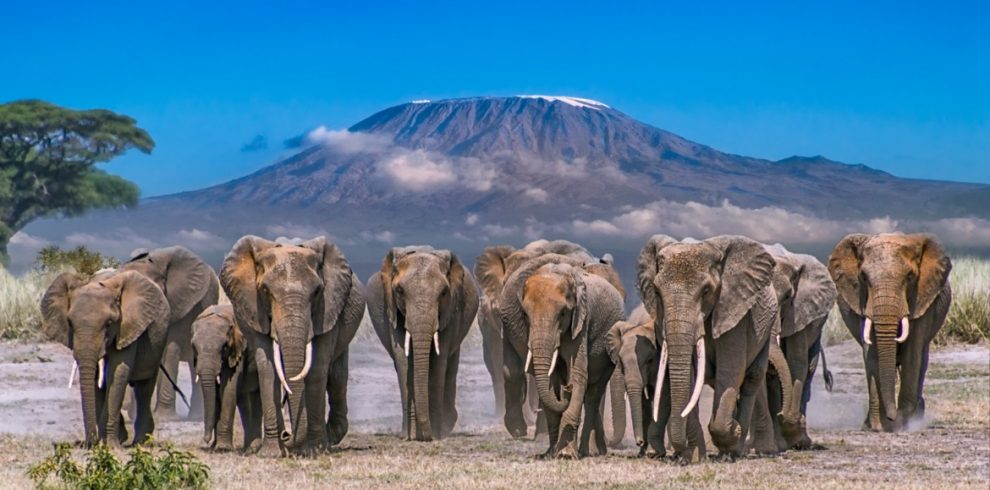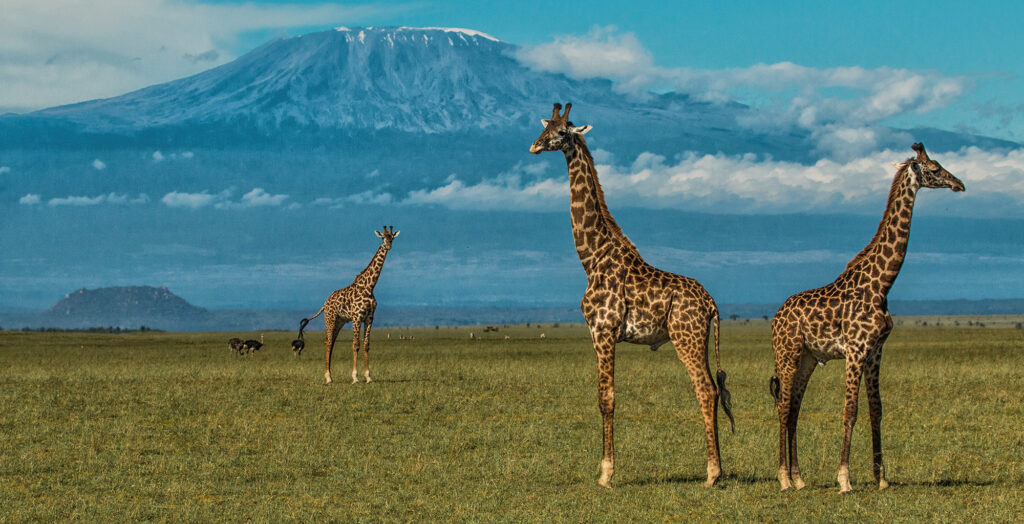Birdwatching in Amboseli National Park
Of all the great safari destinations in Africa, few names evoke as powerful and immediate an image as Amboseli National Park. Synonymous with vast elephant herds marching against the majestic backdrop of Mount Kilimanjaro, it is rightfully celebrated as one of the continent’s premier wildlife theatres. Yet, beneath this well-known narrative lies a quieter, more subtle, but equally breathtaking story—one told in flashes of brilliant plumage, intricate songs, and the graceful soar of wings. For those who listen and look closely, Amboseli reveals itself as one of East Africa’s most rewarding and surprisingly diverse birdwatching havens, a hidden gem waiting to be discovered by avid bird lovers.
Amboseli’s Unique Birdwatching Environment
The secret to Amboseli’s incredible avian diversity lies in its varied ecosystems, all compacted into a relatively small area. The park is not a monolithic savannah; it is a mosaic of distinct habitats, each hosting its own specialist birdlife. The seasonal wetlands and permanent swamps, fed by the underground aquifers of Kilimanjaro, form the vibrant, green heart of the park. These lush oases are surrounded by open, dusty grasslands and acacia woodlands, while the alkaline lake beds add another unique habitat to the mix. This incredible variety, from water to woodland to plain, means a birder can travel just a few kilometers and move between entirely different bird communities, making every game drive a new discovery.
Resident Birds of Amboseli
Year-round, the skies and plains of Amboseli are alive with a spectacular array of resident birds. The grasslands are patrolled by the world’s largest bird, the Common Ostrich, and the elegant, snake-hunting Secretary Bird, a quintessential sight of the open plains. The swamps are adorned by the regal Grey Crowned Crane, with its golden crest and intricate dance, often seen foraging in the wetlands. Vibrant Superb Starlings flash iridescent blue and orange from acacia thorn trees, while groups of chattering African Grey Hornbills fly between perches. From the ubiquitous Lilac-breasted Roller (a photographer’s favourite) to the ground-scuttling Cape and Crested Francolins, the resident population ensures fantastic birding on any day of the year.
Migratory Birds in Amboseli
From October to April, Amboseli’s bird population receives a spectacular boost with the arrival of millions of Palearctic migrants fleeing the northern winter. The wetlands and grasslands become a temporary home for a host of species. Raptors like the Eurasian Marsh Harrier patrol the swamps, while flocks of White Storks can be seen circling high overhead. The edges of the water come alive with waders like Green Sandpipers, Common Sandpipers, and Ruff, and the air is filled with the cheerful chirping of Yellow Wagtails and Willow Warblers. This seasonal influx nearly doubles the number of observable species, offering European and Asian birders a chance to see familiar birds in an spectacularly exotic context.
Waterbirds of Amboseli’s Swamps
The permanent swamps—Enkongo Narok, Olokenya, and Longinye—are the epicenters of birding activity. These nutrient-rich wetlands are a magnet for waterbirds. Large flocks of Greater and Lesser Flamingos tinge the shallow waters pink, while stately Goliath Herons, Great Egrets, and Black-headed Herons stalk the waterways. African Jacanas (or “Lily Trotters”) demonstrate their incredible ability to walk on floating vegetation with their long toes. Pink-backed Pelicans can be seen fishing in groups, and the haunting cry of the African Fish Eagle is a classic sound of the Amboseli waterside. Even the hippo pools contribute, as their nutrient-rich droppings support the fish that many of these birds rely on.
Raptors of Amboseli
The open skies of Amboseli provide the perfect stage for birds of prey. This is one of the best parks in Kenya to observe a magnificent variety of raptors. The massive Martial Eagle, Africa’s most powerful eagle, can be seen perched prominently on acacia trees. The ubiquitous Tawny Eagle and Bateleur are common sights soaring on thermal currents. Lappet-faced Vultures and White-backed Vultures play their critical role as the ecosystem’s clean-up crew. Smaller raptors like the African Harrier-Hawk, Pygmy Falcon, and the hovering Black-winged Kite add to the impressive list of aerial predators, making every glance skyward potentially rewarding.
Rare and Endemic Species
For the dedicated birder, Amboseli offers the chance to spot some rare and threatened species. The Grey Crowned Crane, though still seen, is a species of conservation concern due to habitat loss across its range. The Lesser Kestrel, a threatened migratory species, can sometimes be found hunting over the grasslands. Keen-eyed observers can also look for the Somali Ostrich, identified by its distinct blue-grey neck and thighs, which can be distinguished from the more common Southern Ostrich. While not heavily forested enough for many true endemics, the park’s unique habitat mix creates a chance to see species that are localized and uncommon elsewhere.
Best Seasons for Birdwatching in Amboseli
Birding is fantastic year-round, but the experience changes with the seasons.
-
Dry Season (June-October): Excellent for general wildlife viewing and raptors, which are more easily spotted in the sparse vegetation. Resident birds are concentrated around water sources.
-
Wet Season (November-April): This is the prime time for birding. The parks bursts into life with migratory species, the landscapes are lush and green, and many birds are in breeding plumage, making for spectacular photography. This is the period of peak diversity.
Best Birdwatching Spots in Amboseli
-
Enkongo Narok Swamp: The largest swamp, unparalleled for waterbirds, waders, and species like the African Spoonbill.
-
Observation Hill: Provides a panoramic overview of the wetlands, perfect for scoping large areas for flocks and raptors.
-
Ol Tukai Lodge Area: The acacia woodland surrounding the lodge is a hotspot for woodland species, barbets, and weavers.
-
The Open Plains: Cruising the grasslands between swamps is best for bustards, coursers, larks, and of course, Secretary Birds.
Photography Tips for Birdwatching
A telephoto lens (300mm minimum, 500-600mm ideal) is essential for capturing clean images of birds. The soft, golden light of early morning is not only the best for photography but also when birds are most active. Be patient and try to capture behaviour—a fish eagle swooping, cranes dancing, or a weaver building its nest. Use your vehicle as a blind to get closer without disturbing your subjects.
Birdwatching Safaris in Amboseli
To truly unlock Amboseli’s avian secrets, consider a safari with a guide who has a specific interest in and knowledge of birds. Many operators, including Woodsy Adventures, offer guided tours where the focus can be tailored to birding. These expert guides can identify species by both sight and sound, know the exact habitats to find specific targets, and can enrich the experience with fascinating insights into avian behaviour and ecology.
Conservation Importance of Birdlife
Birds are critical indicators of ecosystem health. The thriving bird populations in Amboseli, particularly the water-dependent species, signal the vitality of its crucial wetland systems. Conservation efforts that protect these habitats from drainage or pollution not only save elephants but also safeguard the migratory routes and breeding grounds for a vast number of local and international bird species.
Combining Birdwatching with Wildlife Safaris
The beauty of an Amboseli birding safari is its perfect balance. While you’re scanning the trees for a rare hornbill, a parade of elephants might amble past your vehicle. A search for waterbirds will inevitably bring you to hippo pools. This is the only park where you can be looking at a majestic Martial Eagle through your binoculars and simply lower them to see the snows of Kilimanjaro. It offers the ultimate complete safari experience.
Cultural Experiences for Birdwatchers
The Maasai people have coexisted with this land and its wildlife for centuries. Some local guides possess a deep, traditional knowledge of birds, often with their own names and stories for different species. A cultural visit to a Maasai manyatta (village) adds a rich, human dimension to the natural history experience, connecting the avian world to the cultural landscape.
FAQs
-
How many bird species can be seen in Amboseli? Over 420 species have been recorded.
-
What is the best time for birding? November to April for migrants and lush scenery; year-round for residents.
-
Are there specialized birding guides? Yes, many safari companies can provide guides with expert ornithological knowledge.
-
Can safaris be tailored for birding? Absolutely. Private safaris can be designed with a primary focus on birdwatching.
-
What unique species are there? Look for the Somali Ostrich, Rosy-patched Bushshrike, and the migratory Lesser Kestrel.
-
Is it good for beginners? Yes, the abundance of large, visible, and spectacular birds makes it incredibly rewarding for all levels.
Conclusion
Amboseli National Park is a destination of dual magnificence. It is a place where the world’s largest terrestrial mammal and some of the most beautiful avian species share the same iconic stage. To visit Amboseli solely for its elephants is to only hear half of its beautiful story. For those who pause to appreciate the flutter of wings and the chorus of calls, the park unveils itself as a hidden gem—a truly world-class birdwatching paradise where every acacia tree and swampy corner holds a new feathered wonder.
Ready to discover the incredible birdlife that thrives in the shadow of Kilimanjaro? Let Woodsy Adventures craft your perfect birdwatching safari in Amboseli. Our expert guides will help you spot and identify everything from majestic eagles to colourful rollers, ensuring an unforgettable experience for bird enthusiasts of all levels. Contact Woodsy Adventures today to book your avian adventure in the heart of Kenya’s premier elephant and birding paradise. Book a trip to amboseli




